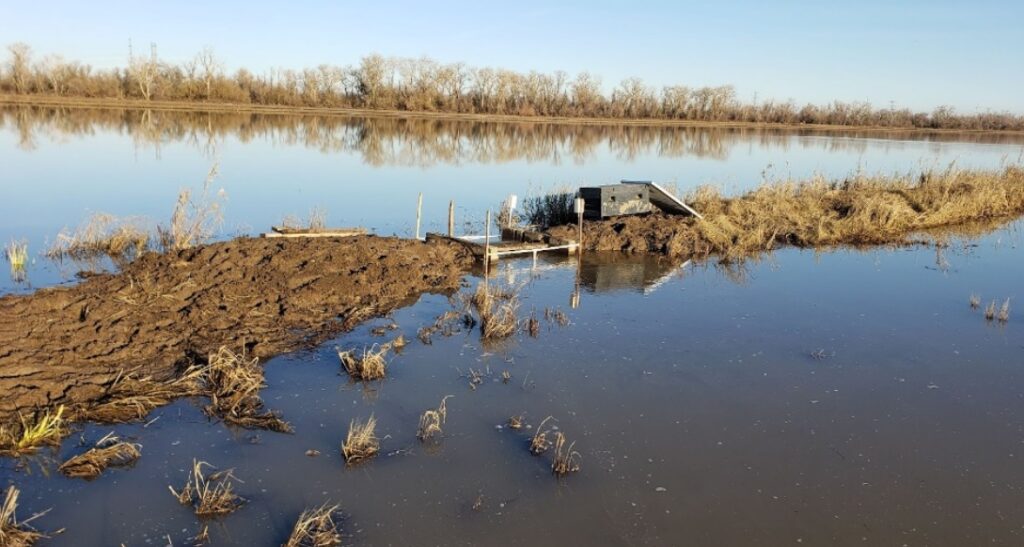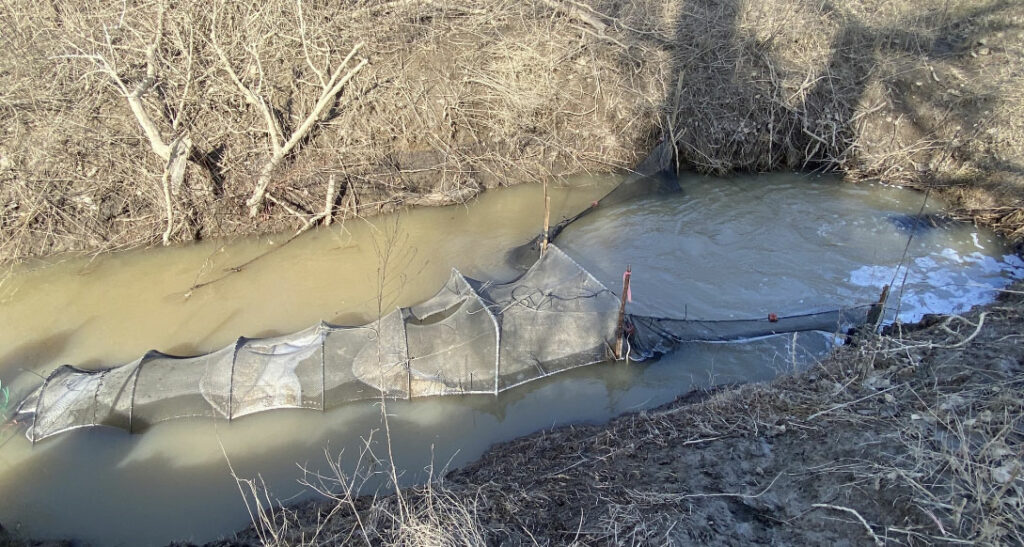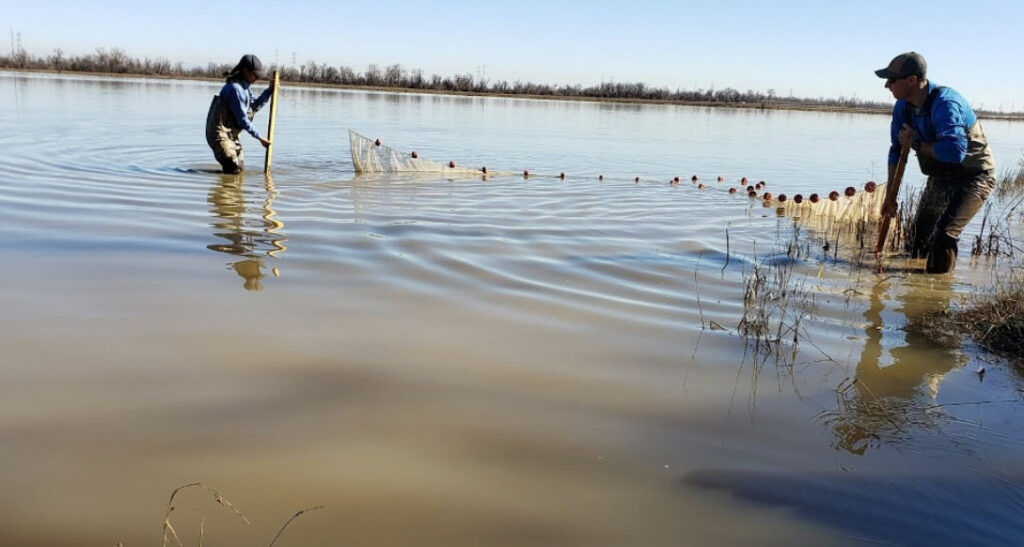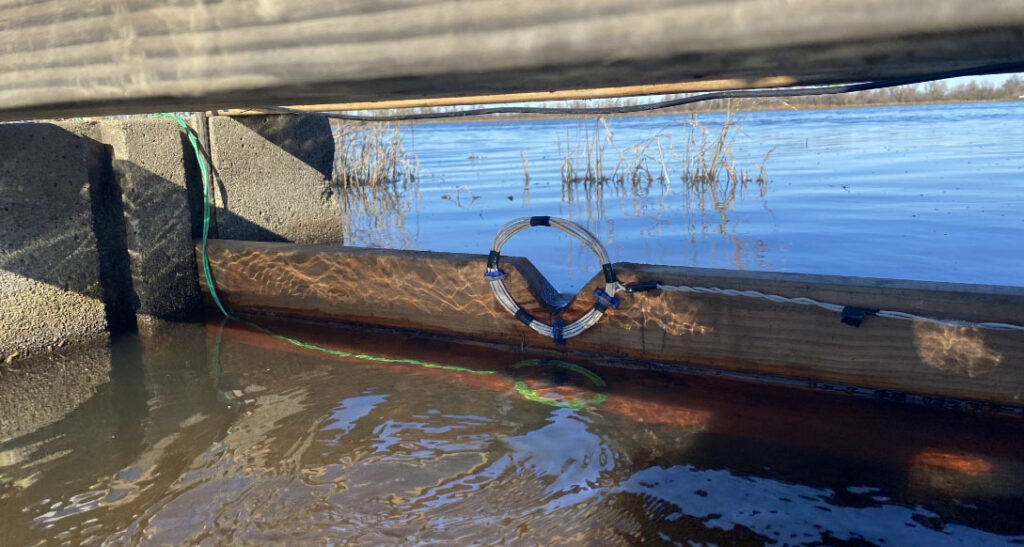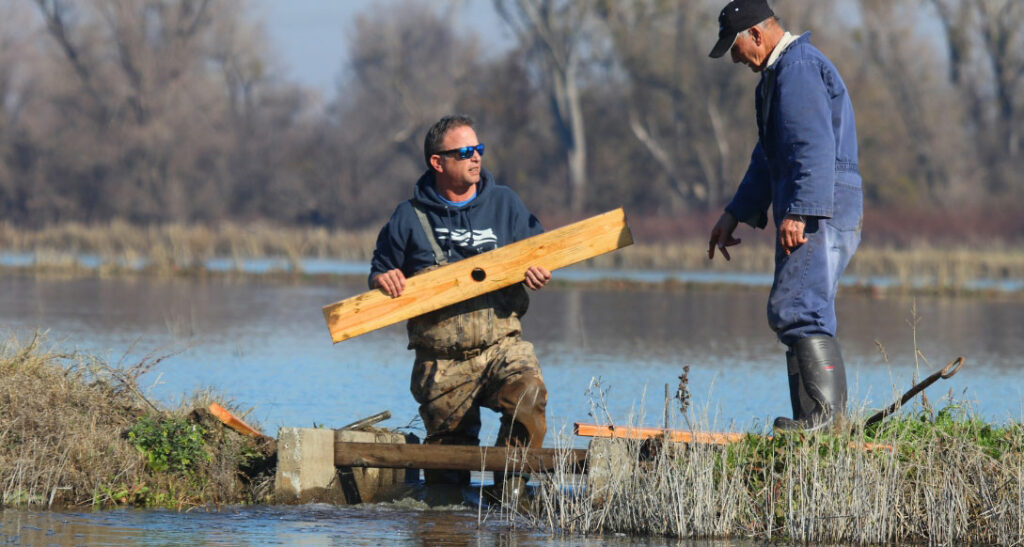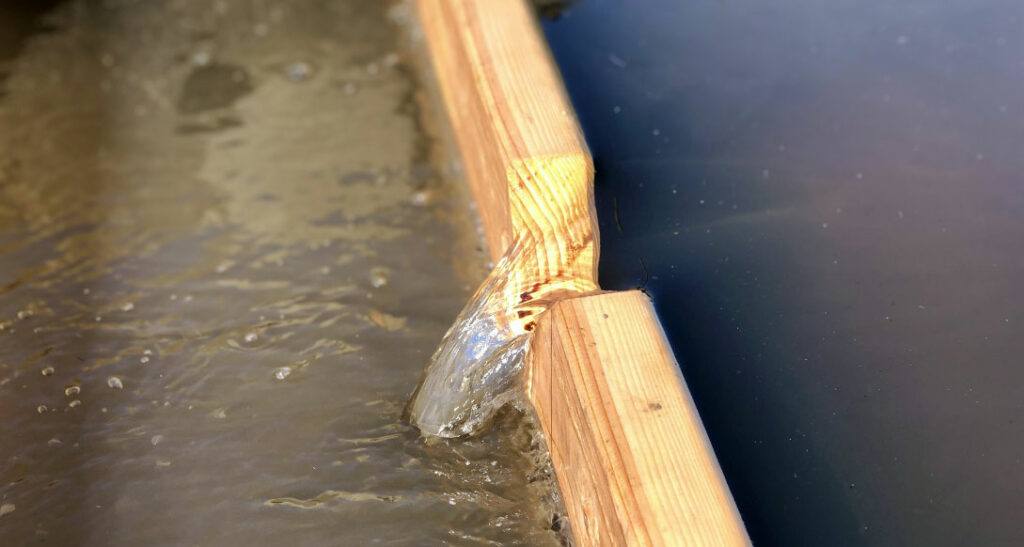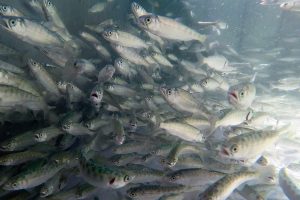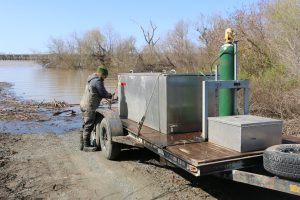The bypass floodwaters receded enough to enable the project field to be safely accessed and the intensive data collection and management practice implementation officially began. UCD science team work included seining, beginning phases of PIT system installation in the field, and installation of a large fyke net system at the outfall drain of the field so that most fish can start to be counted upon existing the field. At this initial stage of fyke net operation, the smallest-sized fish were unable to be held in the fyke net for counting. The grower began to manage the special hole/notch boards as the boards have become accessible with the water levels continuing to recede. These are specialized flow control boards in the rice field rice boxes that allow for the fish to pass from one check to another and then ultimately out of the field entirely. The reason these boards aren’t accessible all at once is because the fields are mildly “terraced” and so the fields closest to the drain side are the last to get down to the target depth of 10–12 inches.
The science team began counting and releasing fish daily, as per our State and Federal agreement allow. By the end of this week just over 40 salmon and several other fish species had be identified and recorded. Based on salmon size-class, it appears we have counted mostly fall run (32). However, all four runs were recorded as using the field to this point, including 1 late-Fall run, 8 Winter run and 2 Spring run, during seining and fyke net operations. We also recorded splittail, shad, hardhead minnow, silverside and hatchery steelhead using the project field. Occasional predators species were also seen including bass and sunfish. PIT tagging also continued this week. To this point, the UCD Team had PIT-tagged about 2000 lab-reared salmon in advance of later release into the project field. About 200 of these have also been JSATS-tagged.
